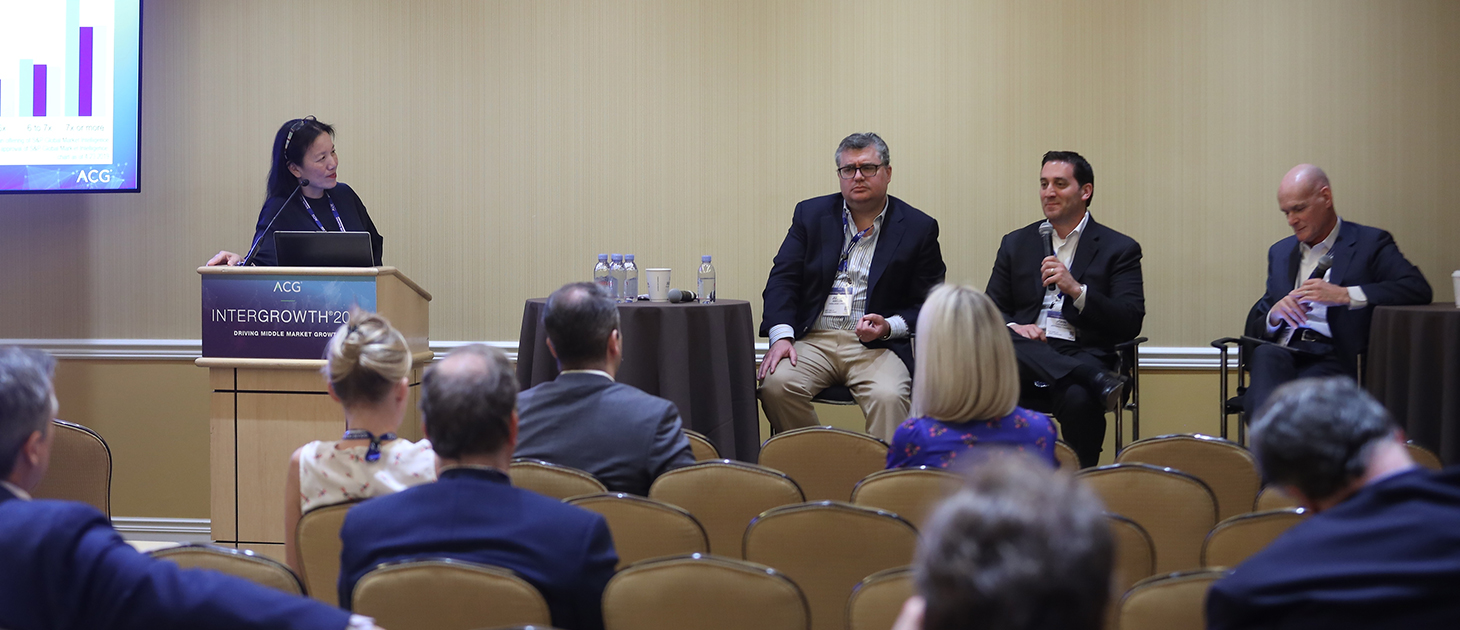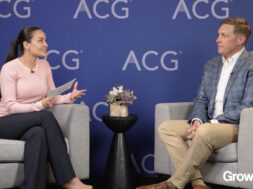S&P Global Leads EBITDA Add-back Discussion at InterGrowth
Panelists discussed the growing prevalence of add-backs and how they're impacting deal assessment and negotiations during a breakout session sponsored by S&P Global at ACG’s InterGrowth conference.

As sustained investor demand for loans has pushed leverage higher and enabled more aggressive deal structures in recent years, EBITDA adjustments—or add-backs—have become a hot topic in the leveraged finance market.
During a breakout session sponsored by S&P Global Market Intelligence at ACG’s InterGrowth conference on May 6, key players across the credit market discussed how the growing prevalence of add-backs is impacting deal assessment and negotiations.
The panelists for the session included Justin Abelow, managing director for Houlihan Lokey; John Liguori, chief investment officer for Jefferies Finance Direct Lending; and Randy Schwimmer, senior managing director and head of origination and capital markets for Churchill Asset Management LLC. The panel was moderated by Ruth Yang, managing director for leveraged commentary and data (LCD), an offering of S&P Global Market Intelligence.
In today’s broadly syndicated market, an increasing number of deals incorporate EBITDA add-backs. Based on LCD data, half of M&A transactions and about a third of all transactions include adjustments.
In addition, the size of those adjustments is not insignificant—in the last year adjustments more than 0.5x made up about 20% of the M&A transactions and 15% of all transactions overall. Furthermore, larger deals tend to have more adjustments than smaller ones. According to the data, about 15% of deals levered at 7x or higher include adjustments, whereas deals levered below 7x had less than 10%.
With these facts as an introduction, the panelists dug into the issue as it applies to the smaller side of the credit markets: direct lending.
This highly liquid bull market has anchored the proliferation of add-backs in transactions. As sponsors search for opportunities to buy and invest in companies, they must also identify the strategy for building value. Consequently, while some of the growth in add-backs results from marketing the deal as attractively as possible, the increase in the number and type of add-backs also reflects the diversity of strategies implemented.
When it comes to assessing the validity of those add-backs, all the panelists underscored the importance of independent credit analysis. While add-backs may be part of the presentation of the deal, all of their teams conduct rigorous, independent analysis of the transaction and its financials.
In the direct lending space, the panel also agreed that there is more opportunity and leverage to push back or pass on deals that are problematic due to the add-backs than there is in the broadly syndicated market.

In fact, proprietary data from investment bank Houlihan Lokey suggests that while EBITDA add-backs are actually materially more prevalent in the direct lending environment than in the syndicated market, the typical magnitude of add-backs was much smaller in the direct market, which the panel attributed to these differences in negotiating dynamics.
The panelists also reinforced that their well-established relationships for sourcing deals enabled them to negotiate terms in the transaction, thus ensuring that the risk/reward balance was realistic and appropriate before committing to a transaction.
When asked about how add-backs will impact defaults and recoveries, the panelists emphasized that rigorous and disciplined credit analyses are fundamental requirements. If you pick quality over quantity, they said, then default and recovery risks should be mitigated.
S&P Global is a leading provider of transparent and independent ratings, benchmarks, analytics and data to the capital and commodity markets worldwide.


